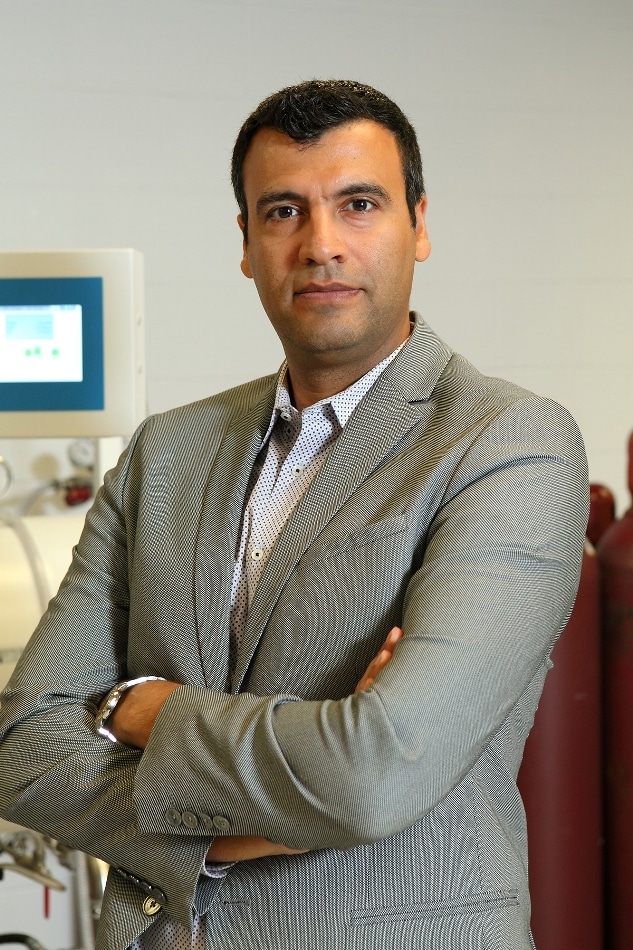Jul 27 2018
Using a progressive, new microscopy method that can visualize chemical reactions taking place in liquid environments, scientists have found a new reason why lithium-oxygen batteries - which promise nearly five times more energy than the lithium-ion batteries that power cell phones and electric vehicles - tend to become slow in pace and die after just a few charge/discharge cycles. They have published their findings in the journal Nano Energy.
 Reza Shahbazian-Yassar. Photo: Jenny Fontaine.
Reza Shahbazian-Yassar. Photo: Jenny Fontaine.
“What we were able to see for the first time is that lithium peroxide develops in the liquid electrolyte of lithium-oxygen batteries, and is a contributor to the slow down and ultimate death of these batteries,” said Reza Shahbazian-Yassar, associate professor of mechanical and industrial engineering in the University of Illinois at Chicago College of Engineering and the paper’s lead author. “This is a newly discovered reason why these promising batteries have such a steep drop off in efficiency and yield after relatively few charge/discharge cycles.”
For years, lithium-oxygen batteries have been enticing to battery researchers due to their potential high energy density. But they are inclined to slow down and stop functioning relatively quickly compared to other batteries. One of the causes for this loss in power is that a byproduct of the chemical reactions that occur within the battery - lithium peroxide - accumulates on the electrodes of the battery. The coated electrodes can no longer work efficiently and chemical reactions that create energy eventually stop.
But currently, Shahbazian-Yassar and his colleagues, using a new transmission electron microscopy method formulated by UIC engineering graduate students Kun He and Yifei Yuan, have proven at the nanometer level, that lithium peroxide also develops in the battery’s liquid electrolyte component, further decelerating chemical reactions.
Knowing that lithium peroxide is building up in the electrolyte itself is a very important finding. Now, we can start to come up with ideas and designs that either prevent this from happening or do something to maintain the proper functioning of the electrolyte so it doesn’t interfere with the battery’s operation, and we can use the new liquid microscopy technique to see if we are moving in the right direction.
Reza Shahbazian-Yassar, Associate Professor of Mechanical and Industrial Engineering
Thus far, lithium-oxygen batteries have only been used as lab-based prototypes, with mass-produced lithium-oxygen batteries for commercial or public use still further away, Shahbazian-Yassar said. “There are many problems that need to be overcome with lithium-air batteries before they can get into mainstream use, but knowing exactly what the issues are is a big first step towards the commercialization of these extremely high energy density batteries.”
Kun He, Yifei Yuan, Tara Foroozan and Boao Song of the UIC College of Engineering; and Xuanxuam Bi, Khalil Amine and Jun Lu of Argonne National Laboratory are the paper’s co-authors.
This study was sponsored partly by grant 1620901 from the Division of Materials Research at the National Science Foundation, and by subcontract 4J-30361 from Argonne National Laboratory.